NIL
Publicis acquires Adopt to strengthen connection to sports culture
Dive Brief: Publicis Groupe has acquired the four-year-old sports and culture agency Adopt, according to a press release. Financial terms of the transaction were not disclosed. Founded by a pair of Nike veterans, David Creech and Josh Moore, in partnership with sports agent Rich Paul, Adopt provides brand strategy, design and identity services, along with […]
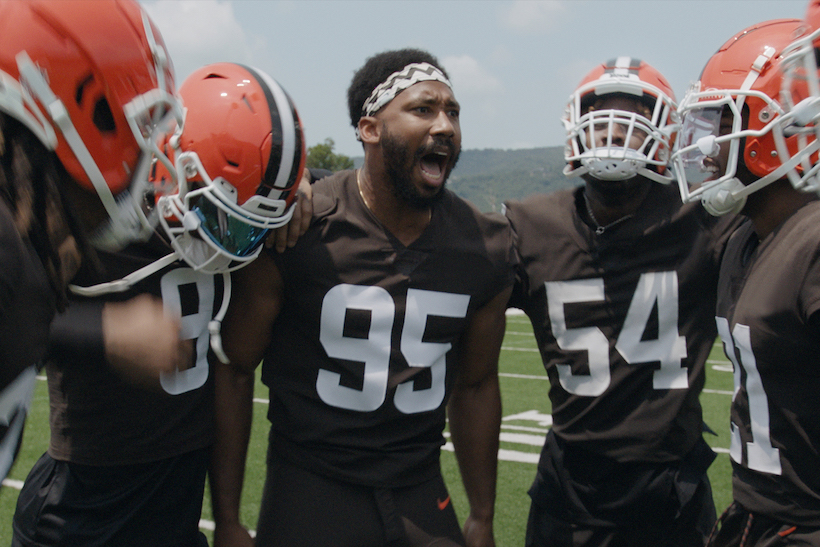

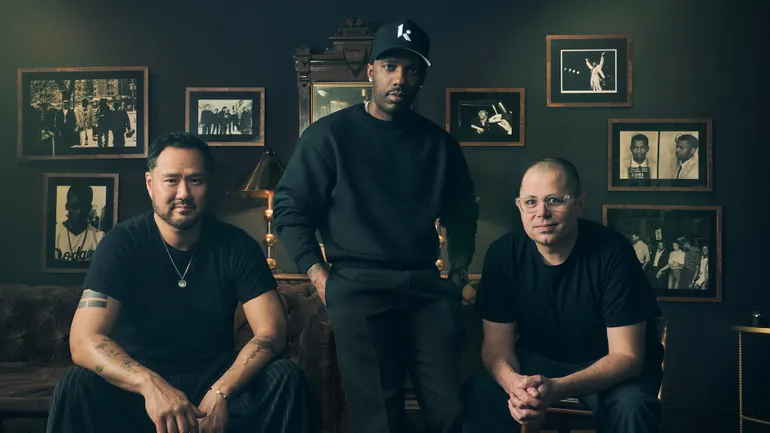
Dive Brief:
- Publicis Groupe has acquired the four-year-old sports and culture agency Adopt, according to a press release. Financial terms of the transaction were not disclosed.
- Founded by a pair of Nike veterans, David Creech and Josh Moore, in partnership with sports agent Rich Paul, Adopt provides brand strategy, design and identity services, along with product development and digital experiences. The shop has worked with brands such as Lululemon, The North Face and Visa, per its website.
- Creech and Moore will continue to lead Adopt, which will be integrated into the Publicis Connected Media unit to support functions like media, data and influencer marketing. The deal speaks to a desire among marketers for greater specialization in sports, which continue to diversify their media footprint.
Dive Insight:
Publicis is strengthening its sports-marketing muscle with the acquisition of Adopt, a Portland, Oregon-based upstart led by a pair of experienced former Nike executives and a trailblazing sports agent. Sports marketing is quickly evolving as more broadcast rights make the transition to streaming while areas including college name, image and likeness deals and women’s sports see a surge in advertiser interest.
The news drops ahead of the upfronts, an annual period for brokering ad-spending commitments where sports are often a major piece of the discussion. In February, Publicis introduced an investment group focused on women’s sports, called Women’s Sports Connect. Other agencies, including WPP’s GroupM, have made similar maneuvers to capitalize on an increasingly lucrative market.
Adopt has worked with both large brands and individual athletes, including Anthony Davis, Dwayne Wade and Chloe Kim. The agency also supports Klutch Athletics, the sportswear brand launched by co-founder Paul in 2023.
“Adopt is at the forefront of creativity, culture and human behavior — blending all three to deliver customer-centric brand strategies,” said Dave Penski, global CEO of Publicis Connected Media, in a statement around the deal. “Their deep and multi-faceted expertise is invaluable to all clients seeking to define and modernize their brand at the speed of culture.”
Before starting Adopt, Creech capped off a nearly two-decade tenure at Nike as vice president of global brand creative and vice president of design for Jordan Brand. Moore was at the apparel maker for over 12 years, ending his stint as global vice president and creative director of Nike Digital, Retail and Content. He spearheaded initiatives such as the popular Nike Snkrs app and Nike Apple Watch.
Publicis is staying active in dealmaking even as the economy softens and agencies brace for pullbacks. In recent months, the network has acquired digital performance marketing agency Dysrupt and identity solutions firm Lotame. The ad-holding group’s organic revenue increased 4.9% year over year in Q1, though leaders cautioned at the time that client cuts could be coming as a result of tariffs.
NIL
Cooper Flagg’s Staggering NIL Deals Revealed Ahead of NBA Draft
Alex Slitz/Getty Images Cooper Flagg of the Duke reacts during the first half in the Final Four against Houston at the Alamodome on April 5, 2025 in San Antonio, Texas. Cooper Flagg may end up taking a pay cut by going to the NBA. The Duke superstar one-and-done swingman reportedly cashed in for $28 million […]


Alex Slitz/Getty Images
Cooper Flagg of the Duke reacts during the first half in the Final Four against Houston at the Alamodome on April 5, 2025 in San Antonio, Texas.
Cooper Flagg may end up taking a pay cut by going to the NBA.
The Duke superstar one-and-done swingman reportedly cashed in for $28 million in Name, Image and License deals during his lone season playing for the Blue Devils.
Flagg, who won the Naismith national player of the year and helped Duke reach the Final Four for the first time under coach Jon Scheyer, was a spokesperson for New Balance, Gatorade and other brands while playing for Duke.
He also signed a multi-year deal with Fanatics for his merchandise and likeness to appear on Topps-brand basketball cards, both from Duke and when he inevitably is chosen first overall at the 2025 NBA Draft next month in Brooklyn.
Flagg is almost certain to be selected by the Dallas Mavericks, who won the draft lottery earlier this month. As the No. 1 overall pick, Flagg will be eligible to make $62-plus million over four seasons for his rookie contract, or more than $15.5 million annually, according to Spotrac.
How Did Cooper Flagg Make $28 Million in NIL Deals?
Flagg was probably the most successful one-and-done player since the NBA began mandating at least one year of post-high school play in 2006.
Still, most conservative estimates had Flagg’s income at $5 million for his NIL deals. That figure would would have made him the second-best compensated college athlete behind University of Texas quarterback Arch Manning, whose estimated NIL deals total about $6.5 million.
But the figure was reported by ESPN reporter Howard Bryant, who was doing a panel with legendary sports broadcaster Bob Costas at the 92nd Street YMCA in New York. The crowd in attendance gasped when Bryant revealed Flagg’s NIL number, and so did Costas.
“He had a $13 million deal with New Balance and then a $15 million deal with Fanatics,” Bryant said.
Did Cooper Flagg Actually Make $28 Million in NIL Money at Duke?
Whether Flagg raked in the full $28 million while in college depends on the contracts, and we won’t be able to see those.
But when you consider the fact Flagg actually had more endorsement deals than those Bryant referenced — he stumped product for Gatorade, and his mom Kelly has been doing endorsements for Dr. Scholl’s orthotics — and Bryant’s reported number on Flagg’s money could be low.
But more likely, Flagg did not rake in nearly $30 million in endorsement money at Duke. He may have signed $13 million and $15 million contracts with New Balance and Fanatics, respectively, but the Fanatics deal was over multiple years, as was his shoe contract with New Balance as well.
Aside from Flagg, NIL deals have been a huge boon for basketball players, especially women’s basketball players. Caitlin Clark made about $4 million in NIL money, and Flau’jae Johnson has raked in about $1.5 million in NIL money thanks to rap-music deals and an equity share of the Unrivaled league.
Hence, why Costas believes it’s a great time for women to play college sports.
“It’s more profitable for a female college-basketball player to stay in college and collect the NIL [money],” Costas said. “For the time being, the top salary in the WNBA is like $75,000.”
Pat Pickens Pat Pickens is an experienced sports writer and media personality who has written for outlets like NHL.com, the Associated Press, the New York Times, USA Today and many more.
He is the author of the 2021 nonfiction book “The Whalers” and director/producer of the 2025 documentary film with the same name about the history of the NHL’s Hartford Whalers. More about Pat Pickens
NIL
Projected Top NBA Draft Pick Reportedly Earned $28 Million in NIL
The biggest star in college basketball last season was undoubtedly Duke Blue Devils’ freshman forward Cooper Flagg. The highly-touted recruit was viewed by many as the best player in the nation before he ever stepped foot on the court in college. Flagg lived up to the enormous hype, though, as he averaged 19.2 points, 7.5 […]

The biggest star in college basketball last season was undoubtedly Duke Blue Devils’ freshman forward Cooper Flagg.
The highly-touted recruit was viewed by many as the best player in the nation before he ever stepped foot on the court in college.
Flagg lived up to the enormous hype, though, as he averaged 19.2 points, 7.5 rebounds and 4.2 assists per game while leading the Blue Devils to the Final Four. This performance also netted him every major award in the nation, including the coveted Wooden Award, which is handed out to the best player in college hoops on an annual basis.
In the modern era of NIL, Flagg’s enormous star power naturally secured him some very lucrative endorsements, and one prominent analyst recently suggested that the true amount of these NIL deals was much higher than anyone could have guessed.
According to CBS Sports’ Brad Crawford, sports reporter Howard Bryant recently sat down with Bob Costas, and in this conversation, Crawford revealed the jaw-dropping NIL total that Flagg secured in his lone year at Duke.
“$28 million,” Howard said. “He had a $13 million deal with New Balance and then $15 million with Fanatics.”
The crowd in attendance was audibly shocked when Howard dropped the enormous figure, and for good reason.
$28 million is more than many All-Star-caliber NBA veterans currently make, so the thought of a college freshman raking in that much is pretty astonishing.
This figure also may be a case of something being too good to be true, as well.
According to Crawford, it’s likely that Howard was conflating the total amount of the deals that Flagg has signed with the amount they are slated to pay out per season.
“Here’s the thing,” Crawford writes, “Howard’s reported total is likely Flagg’s NIL contracts in totality and not an annual payment. ESPN’s Adrian Wojnarowski previously reported Flagg’s New Balance agreement was ‘significant.’ These are often multiyear contracts between incoming rookies and sneaker companies.”
This seems far more plausible than Flagg getting paid $28 million for one year of college basketball.
After all, the New Balance deal he signed as an incoming college freshman was reportedly for several years, and the company knew full well that only one of those seasons would be at the college level.
While Howard’s reporting might have been a bit sensationalized, there’s no denying that Flagg has used his brand to maximum effect at the college level.
He secured generational paydays before ever stepping foot on an NBA court.
Now, the presumptive first overall draft pick will enter his professional career with a level of financial security that no other rookie has ever known.
More NIL News
NIL
New Texas NIL law will go into immediate effect upon governor’s signature
MIRAMAR BEACH, Fla. (KBTX) – The state of Texas’ new name, image and likeness (NIL) bill will go into immediate effect after it is signed by Gov. Greg Abbott, thanks to a two-thirds majority vote from the House of Representatives Thursday. House Bill 126 required the one additional vote from the House after an floor […]
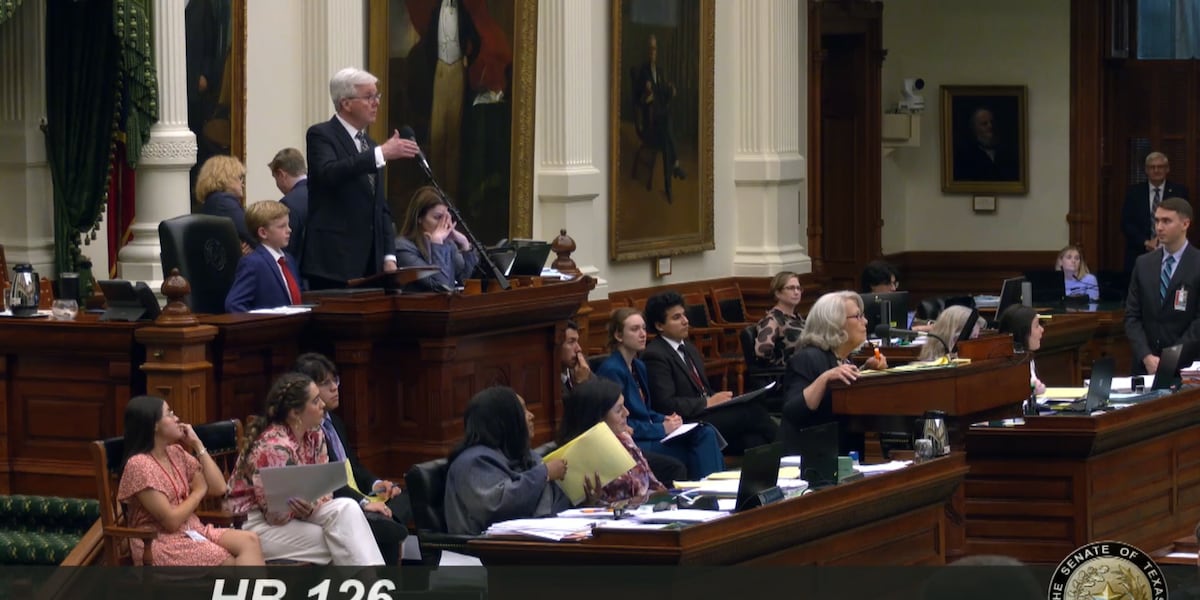
MIRAMAR BEACH, Fla. (KBTX) – The state of Texas’ new name, image and likeness (NIL) bill will go into immediate effect after it is signed by Gov. Greg Abbott, thanks to a two-thirds majority vote from the House of Representatives Thursday.
House Bill 126 required the one additional vote from the House after an floor amendment was added in the Senate barring anyone younger than 17 years old from entering into an NIL contract with a university or third-party entity. Had both chambers not reached a two-thirds majority vote, the legislation would have become law on Sept. 1, well beyond the expected approval of the House v. NCAA antitrust case settlement.
“The current law says we can’t do revenue sharing and so I would imagine that would be a significant disadvantage for our football programs, if everyone else in the country can do revenue sharing and we can’t,” A&M head coach Mike Elko said of the bill Tuesday at SEC Spring Meetings. “So, I think we’re going to need some help there.”
Texas was in need of new NIL legislation to comply with the settlement, which opens up revenue sharing opportunities between universities and their athletes for the use of their names, images and likenesses in broadcasts of games and other publicity outlets. Once the settlement is approved, athletic programs in the state can begin executing revenue sharing contracts with current and prospective athletes, a competitive requirement to hold serve with other states that will fall in line with the settlement order.
“Recruiting is in full force in the summertime and we want to make sure that Texas has every advantage of any other state,” Rep. Carl Tepper (R-District 84), the author of the bill, told KBTX.
The Texas legislature took the bill near the wire, with the legislative session ending on June 2. However, they should not have to worry much about future NIL legislation moving forward, as a clause in the new bill says any changes to NCAA rules or new court orders can supersede the state law. HB 126 is the third iteration of NIL legislation in the state, with the first put on the books in 2021.
“The bill has triggers that allows the NCAA to make subtle changes, which will subtly change our rules here in Texas, so we don’t have to revisit this every time they want to change the rule.”
Copyright 2025 KBTX. All rights reserved.
NIL
Texas A&M to retain Michael Earley as head baseball coach
Texas A&M is set to retain Michael Earley as its head baseball coach, athletics director Trev Alberts announced Friday. The Aggies missed the NCAA Tournament one year after reaching the College World Series finals. Earley took over this season after Jim Schlossnagle’s departure, and Texas A&M got a slew of key pieces back from the […]
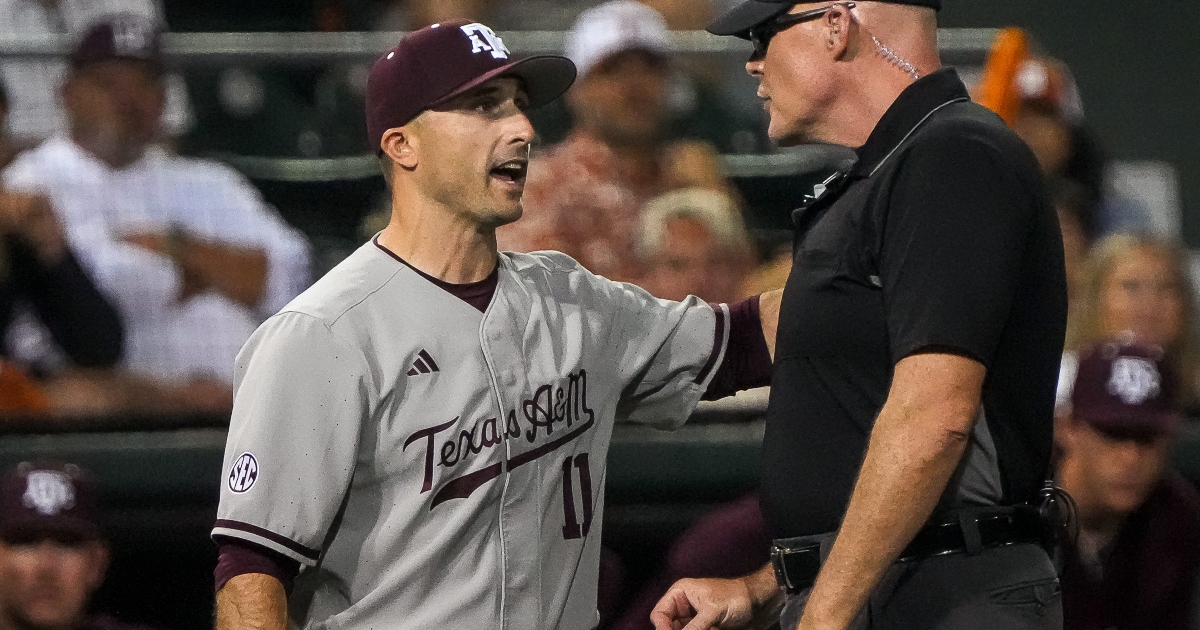
Texas A&M is set to retain Michael Earley as its head baseball coach, athletics director Trev Alberts announced Friday. The Aggies missed the NCAA Tournament one year after reaching the College World Series finals.
Earley took over this season after Jim Schlossnagle’s departure, and Texas A&M got a slew of key pieces back from the transfer portal to eventually come in ranked preseason No. 1. However, the Aggies struggled early in the year before going on a late surge to finish 30-26 overall and 11-19 in SEC play.
Once the season ended, questions swirled about Earley’s future in College Station. Alberts said he was thinking through a decision, but ultimately announced he is staying put as head coach.
“Earlier today I met with Coach Earley to discuss the state of our baseball program,” Alberts said in a statement. “I appreciate Mike’s work in taking a holistic view of what changes need to be made so that we have a baseball program that meets our high standards. Baseball success is critically important to Texas A&M. I am confident in Mike’s ability to execute the needed change and fully support his vision going forward.”
Earley served as the hitting coach on last year’s Texas A&M staff, which rattled off a run to Omaha. He appeared set to leave and follow Schlossnagle to Texas, but ultimately chose to stay put in College Station and take over at Texas A&M.
At the time, the Aggies lost multiple big names to the portal, including Jace LaViolette and Gavin Grahovac. However, they both chose to return, as did a crew of others.
After the down year, there were questions about whether Texas A&M would run it back with Earley. His buyout sat at around $3 million, and On3’s Pete Nakos reported details of the looming decision ahead of the baseball transfer portal window.
Alberts previously confirmed he had some conversations with Michael Earley following Texas A&M’s season-ending loss to LSU in the SEC tournament. Speaking with reporters this past week at the SEC spring meetings, Alberts said a “recap” meeting was in the works once he returned from Destin.
“I’ve had a little bit of communication with Michael, but I’d love to get back to College Station, sit down and sort of recap,” Alberts said, via the Houston Chronicle’s Kirk Bohls. “Obviously we had some highs in baseball. Clearly we fell short. It was a frustrating season and disappointing on a lot of different levels.”
NIL
3 Big Ten teams that were "losers" in the college basketball transfer portal
While the college basketball portal carousel hasn’t completely stopped, it has slowed down significantly. There will still likely be a few additions to some teams, but most schools know roughly what their roster will look like in the fall. Several teams in the Big Ten conference got better – or at least adequately replaced departing […]
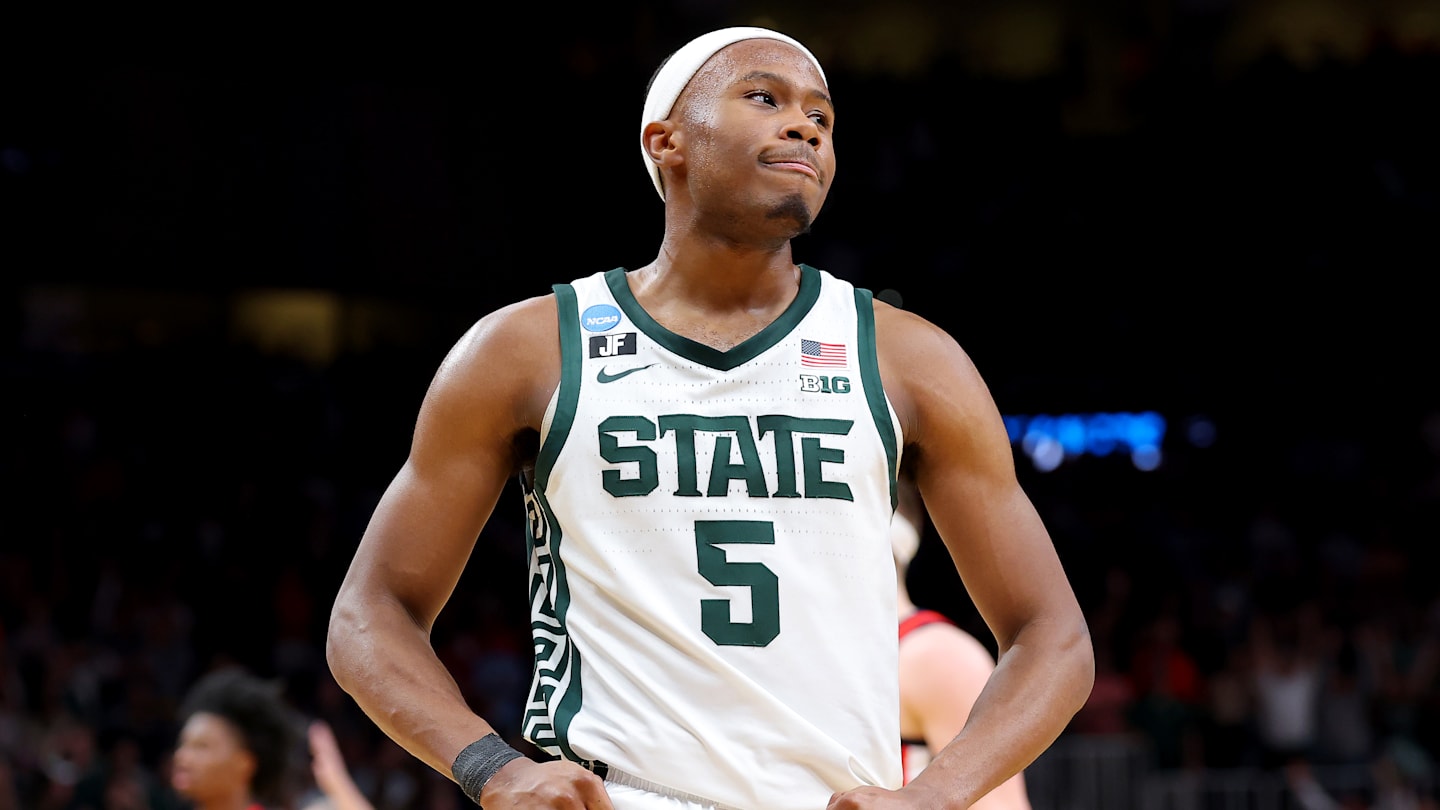
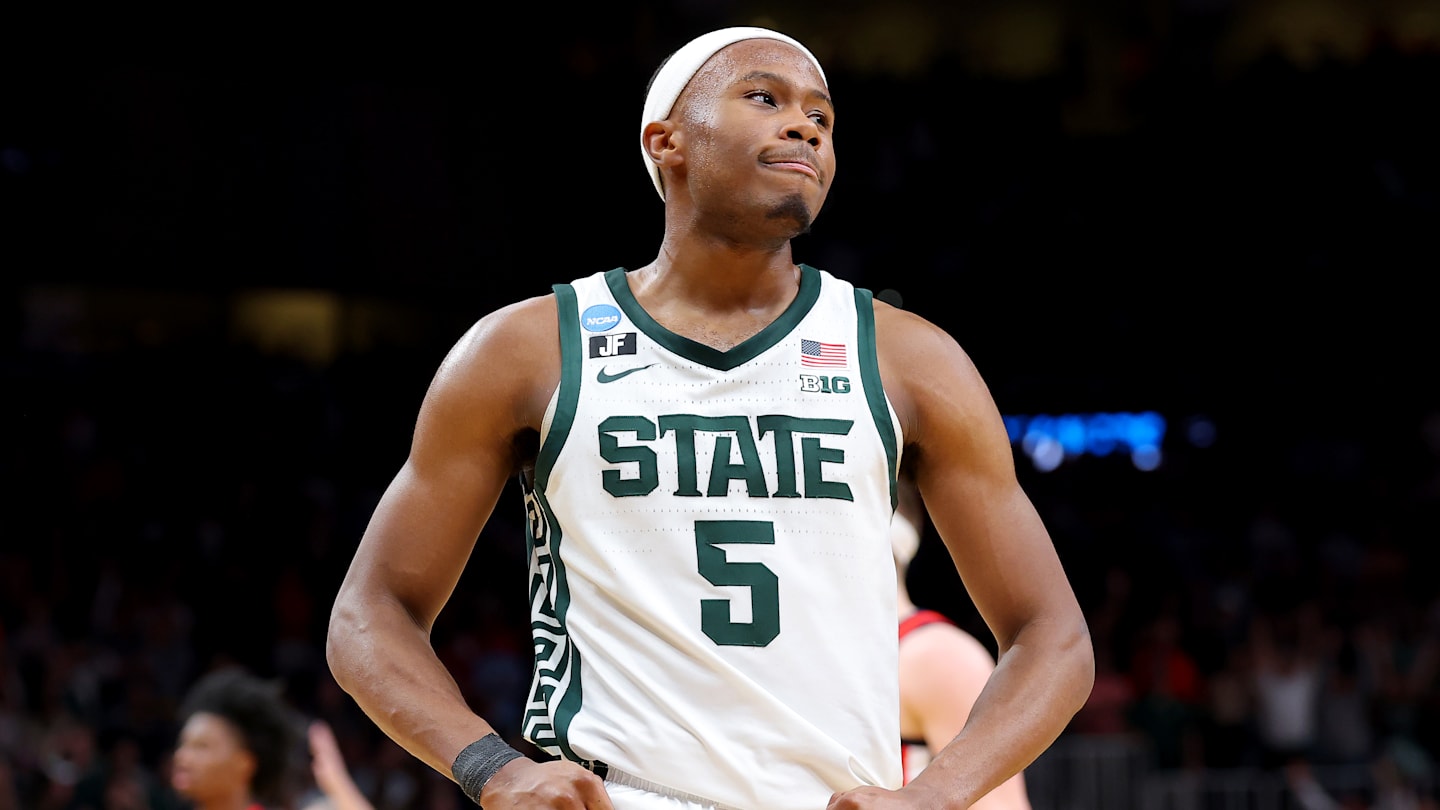
While the college basketball portal carousel hasn’t completely stopped, it has slowed down significantly. There will still likely be a few additions to some teams, but most schools know roughly what their roster will look like in the fall.
Several teams in the Big Ten conference got better – or at least adequately replaced departing players – using the transfer portal; however, there are a few teams whose portal moves left a lot to be desired. Below are the three biggest “losers” in the Big Ten portal movement.
Penn State
The Nittany Lions had a forgettable season last year; they finished with a 16-15 record, stumbled to 17th in the standings and missed playing in the Big Ten tournament. If there was ever a team that needed a couple big time portal signings to inject some optimism into the fanbase for next year, Penn State is it. Instead, PSU had six players enter the portal (although Puff Johnson is technically out of eligibility and entered on the off chance the NCAA changes their eligibility requirements) while only bringing in one transfer. Incoming guard Josh Reed was a quality contributor at Cincinnati (4.8 points, 2.5 rebounds per game) but is unlikely to be a major impact player.
Granted, Penn State has a solid incoming class of five players; it’s also worth noting that most of the portal departures were not major contributors on last year’s team. Still, the Penn State portal moves have been lackluster at best.
Rutgers
Despite likely having two of the top NBA draft prospects on the team, Rutgers had a rough season as they stumbled to a 15-17 record. The talent never ended up equaling wins, and now Ace Bailey and Dylan Harper are gone. Rutgers also had four other players enter the portal including major contributors Lathan Sommerville and Jerimiah Williams. The Scarlet Knights have lost five of their top six scorers from last year’s team.
The incoming portal transfers will only help so much. Baye Fall only played four games for Kansas State last year; Darren Buchanan had a solid first year George Washington but will have to prove he can play Big Ten-level basketball; and while Tariq Francis’s scoring at NJIT looks impressive, it’s somewhat propped up by a usage volume that’s unlikely to continue at Rutgers. The Scarlet Knights need sure-fire impact players with so many departures, but their portal transfers are all question marks.
Michigan State
Losing Tre Holloman hurts the Spartans. While not always the most consistent player, he came on at the end of the season, scoring in double figures in all but his last NCAA tournament game. He probably would have seen his role increase next season but was lured away by new NC State coach Will Wade. MSU also lost Xavier Booker and Gehrig Normand.
Michigan State brought in three transfers to try and mitigate the losses. Trey Fort and Kalen Glenn both led their teams in scoring, but will go from mid-majors Samford and Florida Atlantic (respectively) to a Michigan State team that expects to contend for Final Fours on a yearly basis. Divine Ugochukwa was a role player on a Miami team that only managed seven wins last year. Maybe one of them steps up and shines in Big Ten play, but it’s hard to see where Michigan State came out ahead on their portal moves.
NIL
College sports lurches forward, hoping to find a level playing field with fewer lawsuits
This sounds easy but comes with the assumption that universities – which, for decades, have sought to eke out every edge they can, rulebook or no – will provide accurate data. “Over history, boosters have looked for ways to give their schools an advantage,” said Gabe Feldman, a sports law professor at Tulane. “I think […]
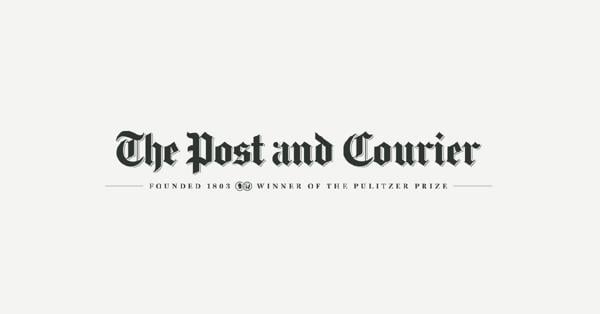
This sounds easy but comes with the assumption that universities – which, for decades, have sought to eke out every edge they can, rulebook or no – will provide accurate data.
“Over history, boosters have looked for ways to give their schools an advantage,” said Gabe Feldman, a sports law professor at Tulane. “I think that will continue even with the settlement. It’s anyone’s guess as to how that manifests, and what the new competitive landscape looks like.”
Adding some level of transparency to the process, along with the CSC’s ability to deliver sanctions if it identifies cheaters, will be key to the new venture’s success.
“There’s legal risk that prohibits you from doing that,” Alberts said. “But we want to start as transparent as we can be, because we think it engenders trust.”
Good intentions aside, Alberts concedes, “I don’t think it’s illogical to think that, at first, it’s probably going to be a little wonky.”
How much should an endorsement deal be worth?
Some of the wonkiest bookkeeping figures to come from the second category of number crunching, and that involves third-party NIL deals. The CSC hired Deloitte to run a so-called clearinghouse called “NIL Go,” which will be in charge of evaluating third-party deals worth $600 or more.
Because these deals aren’t allowed to pay players simply for playing – that’s still technically forbidden in college sports — but instead for some service they provide (an endorsement, a social media shoutout and so forth), every deal needs to be evaluated to show it is worth a fair price for what the player is doing.
In a sobering revelation, Deloitte shared with sports leaders earlier this month that around 70% of third-party deals given to players since NIL became allowable in 2021 would have been denied by the new clearinghouse.
All these valuations, of course, are subject to interpretation. It’s much easier to set the price of a stock, or a bicycle, than the value of an athlete’s endorsement deal. This is where things figure to get dicey. Though the committee has an appeals process, then an arbitration process, ultimately, some of these cases are destined to be challenged in court.
-

 College Sports1 week ago
College Sports1 week agoPortal Update – Basketball and Gymnastics Take Hits
-

 Rec Sports2 weeks ago
Rec Sports2 weeks agoThe Program, a New Basketball Training Facility, Opening in Greenpoint This September
-
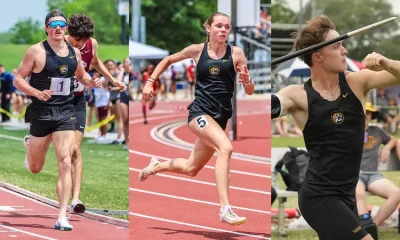
 Sports3 weeks ago
Sports3 weeks agoBarnes, Lippert and Smeal Set School Records at APU Franson Meet
-

 NIL3 weeks ago
NIL3 weeks ago2025 NCAA Softball Tournament bracket, schedule revealed
-

 Motorsports3 weeks ago
Motorsports3 weeks agoLayne Riggs (Bed Cover) Disqualified From Second-Place
-
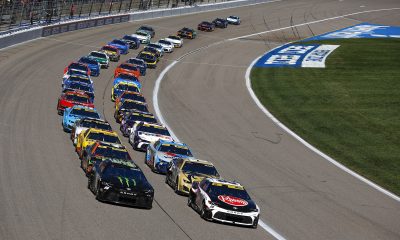
 Motorsports3 weeks ago
Motorsports3 weeks agoNASCAR Delivers Blow To Two Cup Teams After Pre-Race Inspections In Kansas
-

 College Sports2 weeks ago
College Sports2 weeks agoPortal Update – Basketball and Gymnastics Take Hits
-
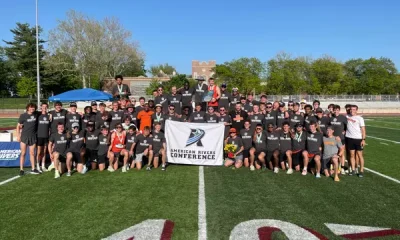
 Sports3 weeks ago
Sports3 weeks agoNo. 12 Men’s Outdoor Track & Field Wins A-R-C Championship
-
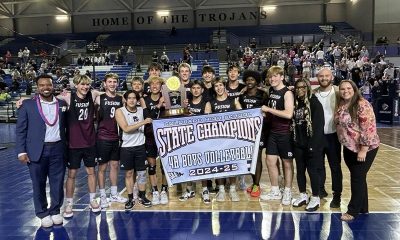
 Sports3 weeks ago
Sports3 weeks ago4A Boys Volleyball: Regis Groff Captures First State Championship
-
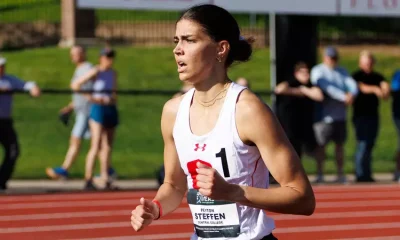
 Sports3 weeks ago
Sports3 weeks agoSteffen wins MVP, three events at league championships















 (via @TheMasters/X)
(via @TheMasters/X)


















